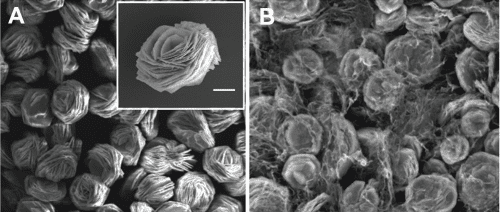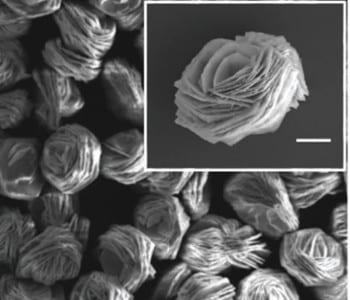By incorporating unique 3D cobalt oxide microstructures into a reduced graphene oxide composite, a team of researchers at the Indian Institute of Science Education and Research presents a promising anode material for lithium-ion batteries.
Although highly commercialized, Li–ion batteries remain limited by the choice of available anode materials. Metal oxides present a potential alternative to conventional graphite anodes, which are coupled with safety concerns, and to Li alloys, which suffer from expansion issues. Cobalt oxide (CoO) has particularly promising properties, namely a high specific capacity and excellent cycling stability against lithium. However, particle aggregation and volume expansion have thus far restricted its candidacy as an appropriate anode material.
Merging CoO into a graphene hydrogel, which acts as a mechanically stable 3D support, the researchers eliminate the problem of volume expansion. Furthermore, the completely interconnected hybrid material presents improved conductivity. A hydrothermal technique is used to obtain β-Co(OH)2 uniform microsctructures with an interesting rose-shaped morphology. These are then anchored on reduced graphene oxide (rGO) sheets for incorporation into a graphene hydrogel (GHG). The authors characterized the structure of the Co(OH)2-GHG, confirming the high crystallinity of the microstructures and the polycrystallinity of the hydrogel, which had a homogeneous graphene distribution.

Scanning electron microscope images of A) Co(OH)2 flower-like microstructures (high resolution inset, scale bar = 5 μm), and B) the microsctructures homogeneously embedded in a reduced graphene oxide hydrogel matrix
CoO and CoO-GHG electrodes, which resulted from annealing of pristine Co(OH)2 microstructures and Co(OH)2-GHG, respectively, largely retained the original 3D interconnected microstructure. On comparing the two materials as Li-ion battery anodes, the CoO-GHG exhibited superior electrochemical performance. The unique morphology of the CoO structures and their cross-linking with rGO sheets enables shorter Li+ diffusion, and removes common problems caused by volume expansion during lithiation/delithiation. Full results and synthesis methods, which could also be extended to other metal oxides, are presented in the authors’ publication in Advanced Materials Interfaces.

















